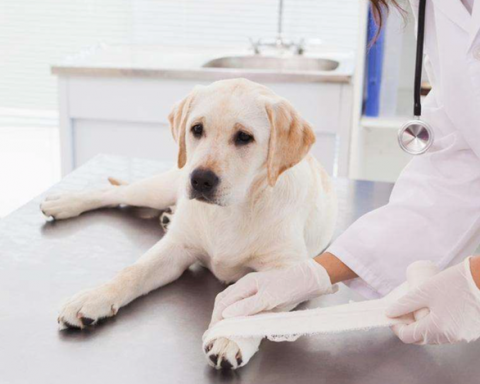Sodium and chloride ions are essential mineral elements for the animal body, and plant-based feeds generally contain low amounts of sodium and chloride. In order to supplement these two elements and enhance the appetite of animals, salt should be supplemented in the diet. However, if the salt intake is too much, especially when the water intake is insufficient, it will cause salt poisoning.
Salt poisoning has been reported in a variety of animals, but different animals have different sensitivities to salt, showing different poisoning doses. Chickens and pigs are the most sensitive, because the dog’s kidneys have a very good excretory function and are not sensitive to salt, so there are very few cases of salt poisoning in dogs reported in the clinic.
The author clinically treated several cases of salt poisoning in pet dogs, now the diagnosis and treatment experience is summarized as follows:
Typical cases
In the morning of March 3, 2004, the pet clinic of “Smartie” admitted a dachshund, male, aged 2 years old, weighing 7.5kg, complaining that the dog vomited twice in the previous two days, and the vomit was mucus, but the appetite was normal. Yesterday night, after eating saline pickled chicken, vomiting, no diarrhea, the morning of the onset of appetite, like to drink water, January 2004 injection of the seven vaccines. Clinical examination: body temperature 35.8 ℃, pulse 156 times / min, arrhythmia, respiration 45 times / min, shallow respiration, oral cavity and eyelid mucosa cyanosis, sunken eyes. It was accompanied by neurological symptoms such as excitability and generalized muscle spasm.
Diagnosis
A preliminary diagnosis can be made based on the history of overconsumption of foods with high salt content, brine-cured chicken and dehydration, as well as severe and obvious neurologic symptoms.
Treatment
The treatment of this disease at present there is no specific drug, for the initial stage and mild poisoning of dogs, can be used to discharge sodium diuretic, bivalent ion isotonic solution infusion and symptomatic treatment, early discovery of the immediate supply of water to drink in small portions to reduce the concentration of salt in the stomach; or 0.1% potassium permanganate aqueous solution to wash the stomach, but also can be applied to vomit emetic agent to induce vomiting. Then take a small amount of oil laxative internally to promote the discharge of salt in the stomach and intestines to avoid reabsorption. Diuretics are utilized to reduce intracranial pressure and relieve cerebral edema.
Symptomatic treatment
Intramuscular injection of atropine sulfate 5–10mg or chlorpromazine hydrochloride 5–15mg antispasmodic and analgesic. 10% calcium gluconate solution 50-100ml or 10% calcium chloride solution 10ml added to 150ml of 10% dextrose injection into the intravenous drip, 50-60 drops / min.
Causal treatment
100ml of 10% dextrose injection solution plus 10–30ml of 50% dextrose injection solution intravenously, 120–150 drops/min.
10% Dextrose Injection 100ml plus VBl100–300mg, VC0.5–1.5g, VB6100–300mg, ATP5–10mg, coenzyme A and so on intravenously, 80 drops/min.
Summary and experience
Causes and mechanisms of poisoning
More than 90% of sodium ions in the animal body exist in the extracellular fluid, which is the main component to maintain the osmotic pressure of the extracellular fluid, so salt poisoning is mainly caused by sodium ions. Salt poisoning in dogs is due to the high concentration of sodium chloride in the body after overfeeding high salt food, and the high concentration of salt firstly stimulates the mucous membrane of the digestive tract causing inflammation and diarrhea, which leads to dehydration of the body. In general, monovalent ions Na+ and K+ have an excitatory effect on nerves, while divalent ions Mg2+ and Ca2+ have an inhibitory effect on nerves. After salt poisoning, the concentration of Na+ rises and the concentration of divalent ions relatively decreases, which destroys the dynamic balance between Na+, K+/Mg2+, Ca2+ and leads to the symptoms of excitability and restlessness due to the dysfunction of the nerves. At the same time, the elevated Na+ concentration increases the osmotic pressure of the extracellular fluid, leading to edema of the brain tissue, which destroys the normal maintenance of the musculoskeletal nerve connections, resulting in a series of neurological symptoms.
Cases of salt poisoning in dogs are relatively rare clinically, and the main cause of poisoning is that pets mistakenly eat pickled food containing much salt or added fish meal. The occurrence of salt poisoning and the amount of drinking water has a close relationship with the dog, when the animal ingests a lot of salt products, if the adequate supply of drinking water, due to the promotion of salt discharge, and therefore not easy to cause poisoning; if the water is not enough or strenuous exercise, hot weather and other reasons resulting in a lack of water is easy to induce poisoning.
Diagnosis
Since dogs are not sensitive to salt, veterinarians seldom encounter it in the clinic, and it is easy to misdiagnose and delay the disease. Diagnosis is mainly based on the following factors: the dog has a recent history of eating high salt food, or there are triggers such as strenuous exercise, vomiting, and insufficient water intake. The diagnosis can be confirmed by the presence of obvious neurological symptoms such as excitability, dyskinesia and generalized muscle spasm during clinical examination.
About prevention and treatment
For the treatment of canine salt poisoning, there is no special effect treatment drugs, mainly to promote the timely discharge of sodium chloride in the body and combined with symptomatic treatment of comprehensive treatment program.
(1) When you suspect that your pet dog has salt poisoning, you should supply water in time and drink it several times to ensure the necessary amount of water and prevent the poisoned dog from drinking a lot of water in a short time and aggravate cerebral edema. At the same time, the internal dose of emetic, prompting the gastrointestinal salt as soon as possible discharge. Mild poisoning cases can be cured without medication. For severe neurological symptoms of sick dogs, in addition to emetic, gastric lavage and drinking water, should be applied as soon as possible 10% calcium gluconate drip, with calcium ions to replace sodium ions, in order to restore the ionic balance of the body, alleviate the symptoms of poisoning.
(2) In order to relieve the symptoms of cerebral edema and reduce intracranial pressure, 25% sorbitol or hypertonic glucose solution should be applied.
(3) In order to prevent salt poisoning in pet dogs, ingredients with high salt content such as salted meat, ham and fishmeal should be reasonably added to the diet; high salt food should also be avoided in the hot summer months or after strenuous exercise, or enough water should be given to drink after feeding.

